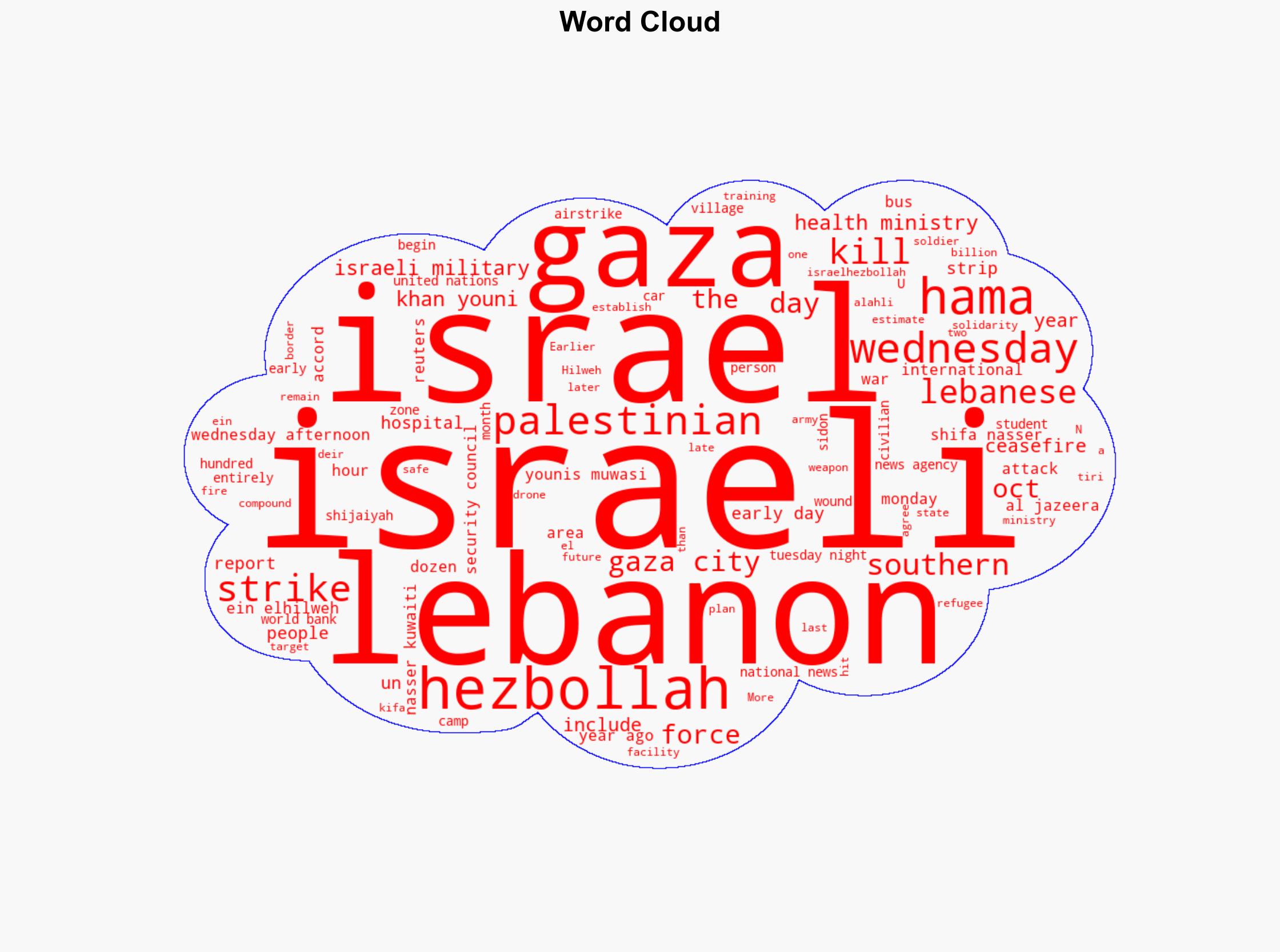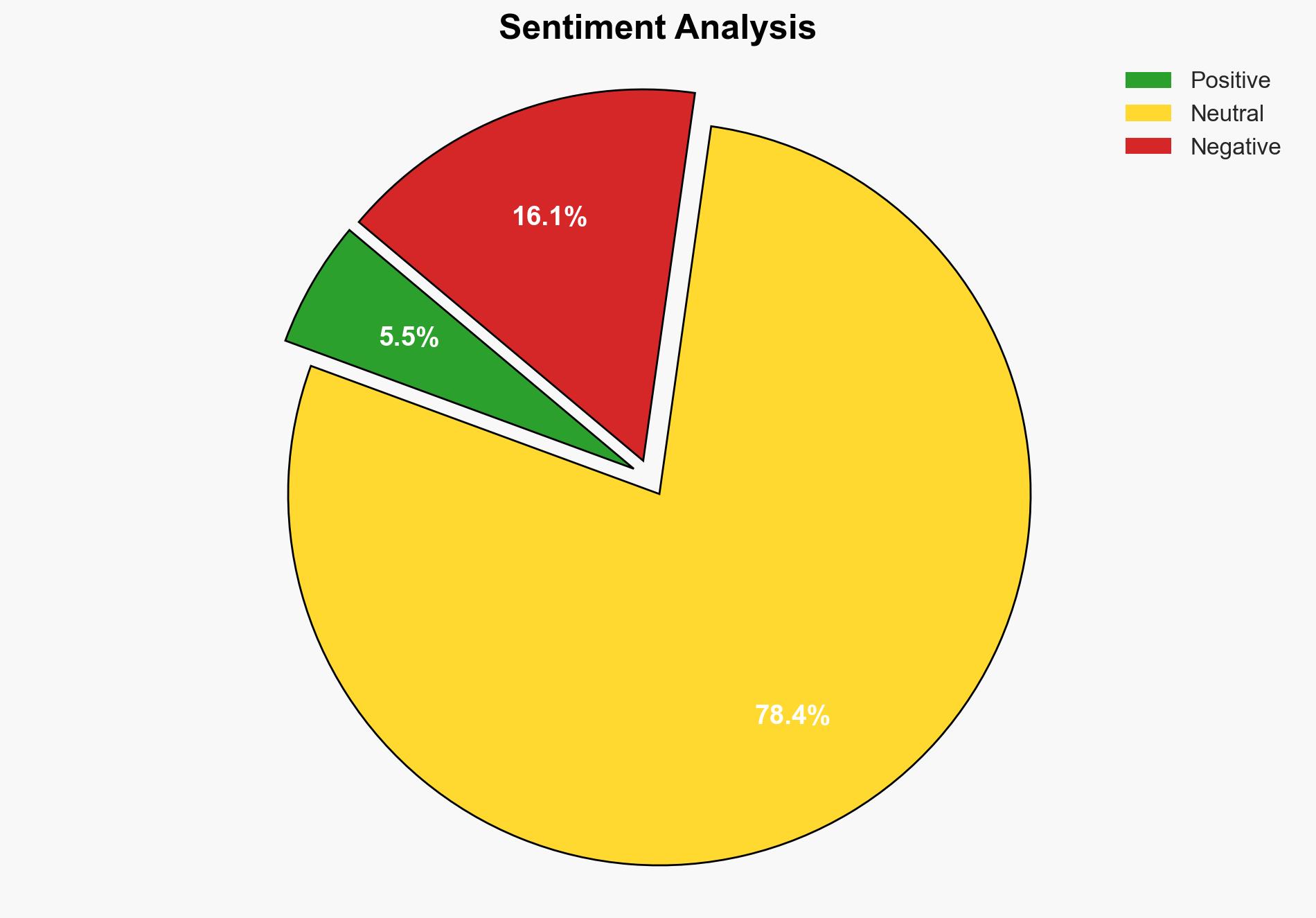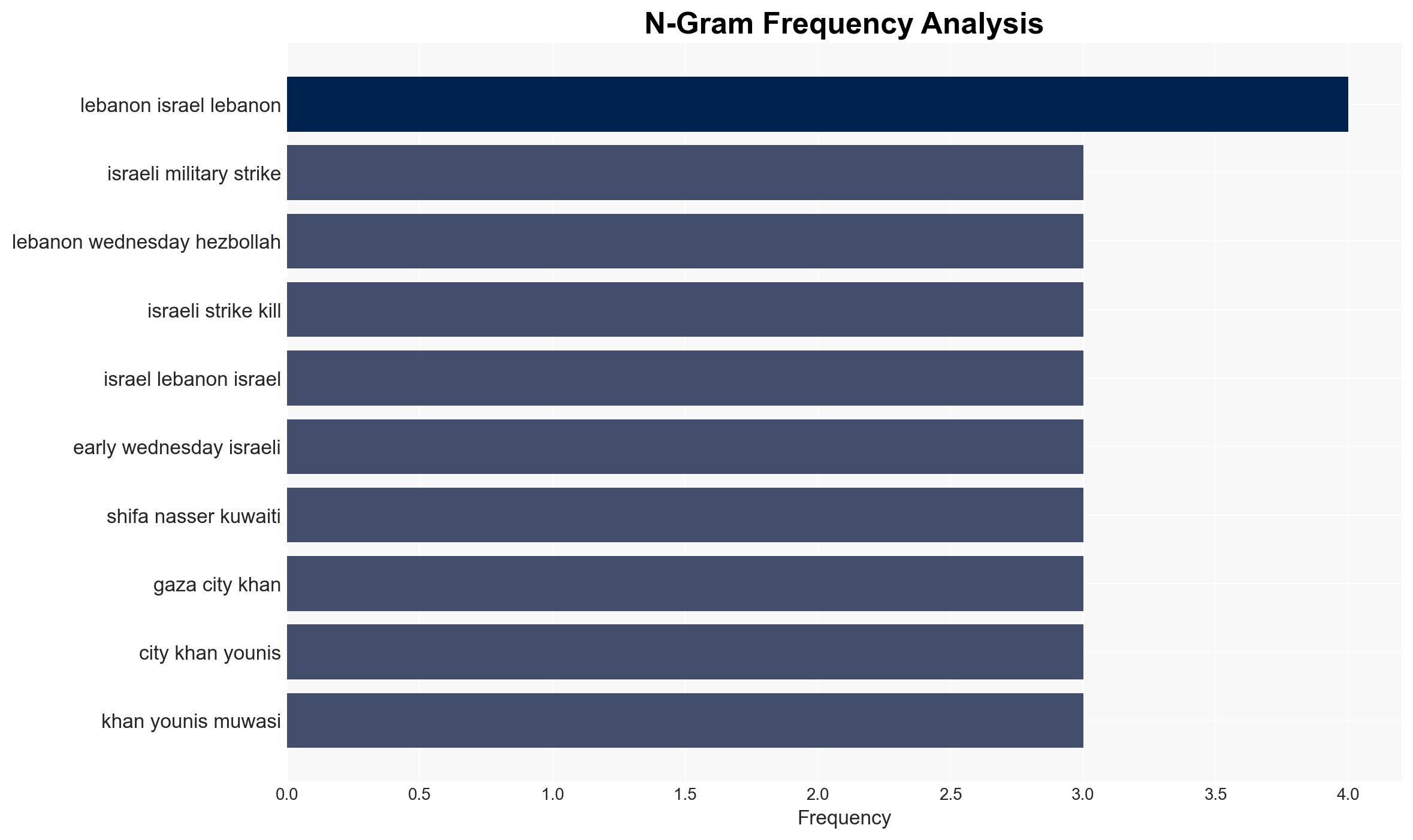Israeli military strikes in Lebanon Gaza kill dozens of people – CBS News
Published on: 2025-11-19
AI-powered OSINT brief from verified open sources. Automated NLP signal extraction with human verification. See our Methodology and Why WorldWideWatchers.
Intelligence Report: Israeli Military Strikes in Lebanon and Gaza
1. BLUF (Bottom Line Up Front)
The most supported hypothesis is that Israeli military strikes are a preemptive measure to disrupt Hezbollah and Hamas capabilities amid escalating tensions. Confidence level: Moderate. Recommended action: Engage in diplomatic channels to de-escalate tensions and monitor regional military activities closely.
2. Competing Hypotheses
Hypothesis 1: Israeli strikes are a strategic preemptive action aimed at degrading Hezbollah and Hamas military capabilities to prevent future attacks on Israel. This hypothesis is supported by Israel’s claims of targeting weapon storage facilities and training compounds.
Hypothesis 2: The strikes are retaliatory actions in response to recent provocations or attacks by Hezbollah and Hamas, intended to deter further aggression. This is supported by the context of recent rocket fire from Hezbollah and ongoing hostilities with Hamas.
Hypothesis 1 is more likely given the strategic nature of the targets and the historical context of preemptive strikes by Israel in similar situations.
3. Key Assumptions and Red Flags
Assumptions:
– Israel has accurate intelligence on Hezbollah and Hamas military activities.
– The strikes are intended to be limited and precise to avoid broader conflict escalation.
Red Flags:
– Potential misreporting or exaggeration of casualties and damage by involved parties.
– Lack of independent verification of Israeli claims about the nature of targets.
Deception Indicators:
– Possible misinformation campaigns by Hezbollah or Hamas to garner international sympathy.
4. Implications and Strategic Risks
The strikes could lead to a cycle of retaliation, increasing the risk of a broader regional conflict. Politically, this may strain Israel’s relations with Lebanon and other neighboring countries. Economically, prolonged conflict could disrupt regional trade and impact global markets. Informationally, there is a risk of increased propaganda and misinformation campaigns by involved parties.
5. Recommendations and Outlook
- Engage in diplomatic efforts to de-escalate tensions and promote dialogue between Israel, Lebanon, and Palestinian authorities.
- Enhance intelligence-sharing with allies to monitor potential threats and prevent further escalation.
- Best-case scenario: Successful diplomatic intervention leads to a renewed ceasefire and stabilization of the region.
- Worst-case scenario: Escalation into a full-scale conflict involving multiple regional actors.
- Most-likely scenario: Continued sporadic violence with intermittent diplomatic efforts to manage tensions.
6. Key Individuals and Entities
No specific individuals are mentioned in the source text. Key entities include the Israeli military, Hezbollah, and Hamas.
7. Thematic Tags
Structured Analytic Techniques Applied
- ACH 2.0: Reconstruct likely threat actor intentions via hypothesis testing and structured refutation.
- Indicators Development: Track radicalization signals and propaganda patterns to anticipate operational planning.
- Narrative Pattern Analysis: Analyze spread/adaptation of ideological narratives for recruitment/incitement signals.
Explore more:
Counter-Terrorism Briefs ·
Daily Summary ·
Support us





